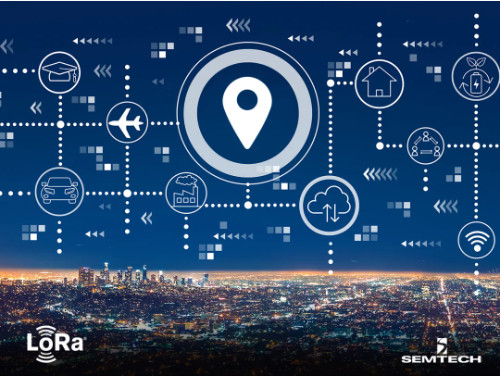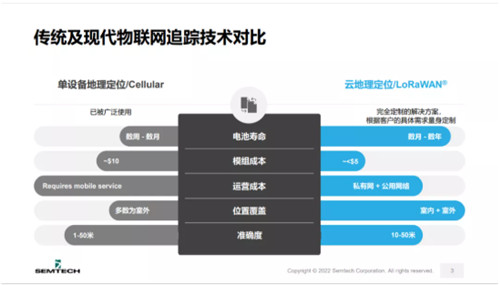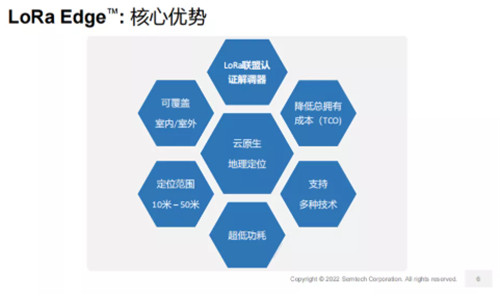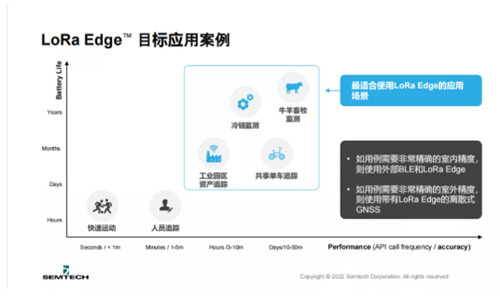Call Us Now
+8615914489090

Initially, our understanding of LoRa is an LPWAN communication technology with low power consumption, low cost, and wide coverage.
After several years of development, LoRa technology has also established its position as one of the two heroes in the LPWAN field, and has been recognized by the industry at the communication level.
First, on a global scale, LoRa is booming. From the latest global deployment of LoRa: As of December 2021, more than 2.7 million LoRa-based gateways have been deployed worldwide, and there are more than 225 million LoRa-based terminal nodes. The deployment of LoRa or LoRaWAN® covers 171 countries and regions, and there are currently 163 LoRaWAN® operators worldwide (a 3x increase in 3 years). In addition, the LoRa Alliance is working with the world's major IoT ecosystems to promote the expansion of LoRa market applications. At present, the LoRa Alliance has more than 400 company members, including heavyweight software companies and satellite communication service providers.
Second, complete the leap from de facto standards to international standards. In December 2021, LoRaWAN was approved as an ITU international standard, and LoRaWAN became a true LPWAN global standard. This is a milestone time node in the development of LoRa, and it also lays the foundation for the further development of LoRaWAN on a global scale. The introduction of "Recommendation ITU-T Y.4480" further proved the correctness of the decision to use LoRaWAN as a standard in the market, which also had an impact on this huge group and played a very positive role in subsequent market promotion.

Understanding of LoRa technology: Start with "communication", then "positioning" With the emergence of more new mobile devices, such as wearable devices, the category and quantity of IoT devices have grown rapidly, and applications based on location awareness have proliferated simultaneously. Location awareness has played an increasingly important role and has become an important part of the Internet of Everything. ring.
In indoor and outdoor environments, providing location information continuously and reliably can bring a better experience to users. Outdoor positioning and location-based services have been very mature, GPS and map-based location services are widely used, and become one of the most used applications for various mobile devices. In recent years, the related technologies and industries of location-based services are developing indoors to provide ubiquitous location-based services. The main driving force is the huge application and commercial potential that indoor location-based services can bring. At the same time, the combination of indoor and outdoor is also beginning to emerge. In the past, we introduced LoRa more from the communication level. Today, we will learn more about LoRa from the perspective of positioning.
Let’s start with the current situation and characteristics of the IoT positioning market. First, due to the fragmented nature of IoT applications, there is no set of systems and technologies that can unify the entire IoT arena, and the same is true of the positioning market. In many IoT positioning application scenarios, longer battery life, lower costs, and more flexible operating models are required.
Second, each technology that has practical application has its limitations. For example, WiFi positioning basically mainly realizes indoor positioning, while GNSS mainly realizes outdoor positioning, and there are still great opportunities for indoor and outdoor fusion positioning scenarios.
Third, in terms of positioning accuracy, different application scenarios have different requirements. Some application scenarios require high-precision positioning, and some scenarios only require an approximate positioning range. This is why Semtech chose to launch its LoRa Edge-based cloud positioning system even though various positioning technologies have been able to provide mature positioning services.

LoRa Edge is mainly aimed at the positioning range of 10-50m, and is a positioning system that achieves medium-precision positioning. The positioning solution based on the system can be customized according to the specific needs of the client. Its terminal battery life can reach several months or even several years, and its module cost can also be less than 5 US dollars. The integration of public and private networks can be achieved. Indoor and outdoor continuous coverage.

LoRa Edge in the field of high-precision positioning As mentioned above, the LoRa Edge positioning solution is a medium-precision positioning solution. Is it useless for application scenarios with high-precision positioning requirements? Actually not! In fact, it is difficult for a single technology to meet the application market, and even if it can be satisfied, it will result in a waste of costs or resources.
For example, UWB positioning requires four gateways in a room, while the combination of LoRa Edge and other positioning technologies requires only one LoRa gateway. In this way, the deployment cost of the network can be greatly reduced.
Therefore, in specific projects, many technical solutions adopt the integration of multiple technical types. For example, in high-precision positioning scenarios such as chemical plants, it is more inclined to use the combination of LoRa Edge and other technologies to reduce cost and power consumption.
Therefore, when the demand for high-precision positioning continues to rise, a combination of LoRa Edge + other technologies is usually deployed. It is believed that in the future positioning technology application market, multi-technology integration solutions are more in line with the needs of the market.
As we know, LoRa Edge (LR1110 chipset) is a highly versatile and low-power platform launched by Semtech in 2020, which can be defined by software. LoRa Edge can provide positioning capabilities covering both indoor and outdoor. Traditional chip-based geolocation devices are computationally intensive, often resulting in only weeks to months of battery life.
The LoRa Edge solution, on the other hand, can distribute computation between the positioning device and the LoRa Cloud, allowing the device to have a battery life of months or even years, making it more suitable for IoT applications including industrial, building, home, agriculture , transportation and logistics. The LoRa Edge geolocation platform not only enables solution providers to take full advantage of LoRa®-specific positioning capabilities, but is also compatible with the LoRaWAN® standard to meet global wireless communication regulatory requirements including China, the United States and Europe. Compared with two years ago, there have been further breakthroughs, and now there are solutions and application cases that have been implemented.
Just recently, Semtech and Tencent Cloud announced that they have reached a definitive agreement, and the LoRa Cloud™ geolocation service can now provide services to customers through the Tencent Cloud IoT development platform.
As part of the LoRa Edge™ geolocation platform, LoRa Cloud has been officially integrated into the Tencent Cloud IoT development platform, allowing users in China to quickly connect LoRa Edge-based IoT devices to the cloud, combined with Tencent Maps' high-confidence, The high-coverage Wi-Fi positioning capability provides Chinese enterprises and developers with flexible, low-power, and cost-effective geolocation service solutions.

Nowadays, LoRa is also making continuous efforts in the field of positioning, and many application cases have emerged abroad, such as shipping ships, deserts, savannahs, forest fire prevention and other scenarios. In addition to positioning, LR-FHSS is worth looking forward to
In 2021, the LoRa Alliance released a protocol to support the LR-FHSS function. There are certain differences between LR-FHSS and the current LoRa technology, and they are based on different technologies at the physical layer. The two perform equally in sensitivity, but there are differences, such as: In terms of access capacity, it is much larger than the capacity of the current LoRaWAN protocol, reaching more than 10 times; In terms of transmission distance, the transmission distance is longer, for example, it can be transmitted to satellites, and LoRa technology has also been built on some satellites. It is worth mentioning that the satellite company acquired by Musk has sent several LoRa satellites. It is reported that Semtech will soon release LR-FHSS satellite communication project customers include: EchoStar, SpaceX (Swarm), Fleet space, Hiber, Inmarsat, CLS-Kinei, etc.
Based on the three points of sensitivity, capacity and transmission distance, LR-FHSS will have more room for innovation in power collection, IoT data collection in dense areas and satellite data collection in the future. We also believe that with the joint efforts of upstream and downstream enterprises in the LoRa industry chain, LoRa will develop rapidly both in terms of communication and positioning.